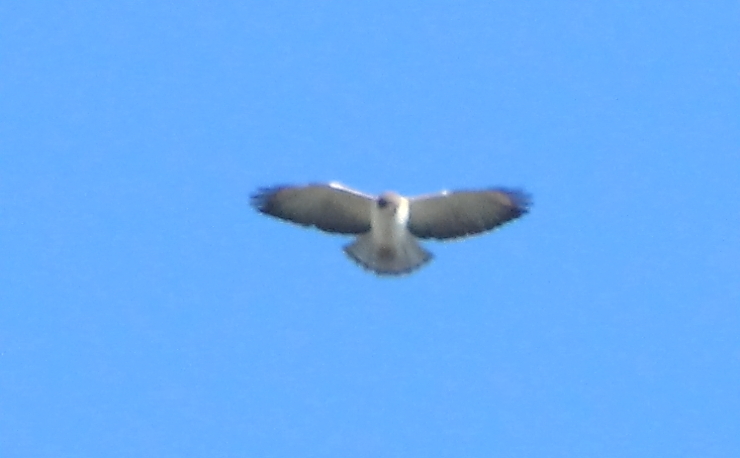
So there I was, less than half an hour into my second formal outing for February, on the Ejido Triquillo (eh-HEE-do tree-KEE-yo) dirt road. I was wishing I had a birding buddy with me as a mixed flock overwhelmed my abilities. Suddenly, a large bird, which seemed to have a bright yellow breast and black head, flew overhead to a point behind multiple branches. I had an idea as to what I was seeing, but could not be sure with the view I was afforded. And then the bird was gone.
Fortunately, I had managed a collection of very bad photos before the bird flew off. And when I got home, they showed exactly what I needed to confirm my ID:
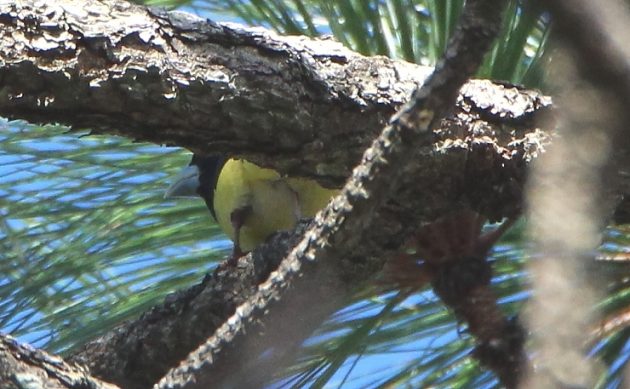
See it?
Most of our readers are not likely to be able to ID this bird, because it only occurs in Mexico and Guatemala. But I know to look for that strange blue-gray bill, along with the black head and yellow breast. That’s a Hooded Grosbeak!
That Hooded Grosbeak was a happy FOY (First Of Year) find for the day. But it wasn’t the day’s first FOY species. That distinction goes to a Rose-breasted Grosbeak. This Grosbeak will not show up in the Michoacán highlands on any range map. But I have discovered its presence at several sites here each spring, from February through April. A very poor photo confirmed this latest sighting, only my second in any year in the month of February.
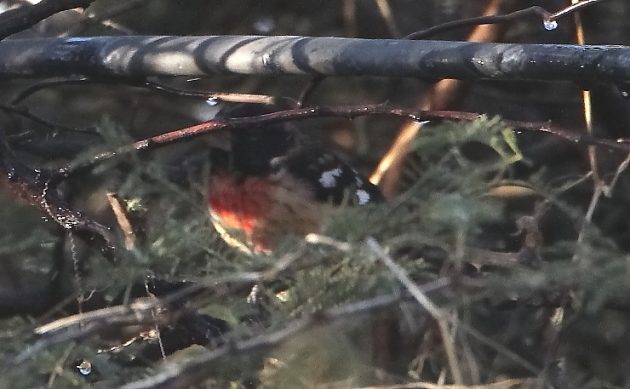
As it turned out, these were not the only bad photos to help me flesh out my 2022 year list that day (species 201-211, on February 12th). There was one that barely showed the bright red color and white cheeks of my first Red Warbler for the year.
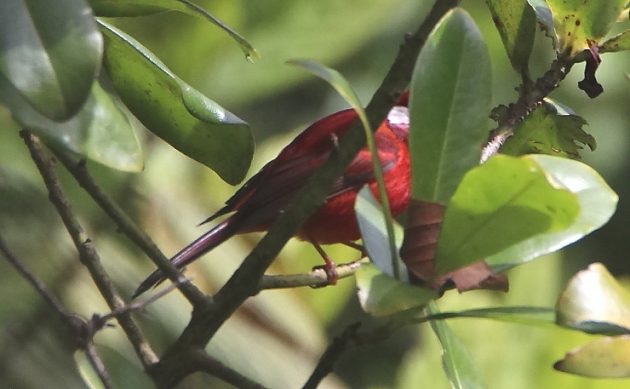
And then there was a Spotted Towhee. (I know, not a spot in sight, and it looks completely different than Spotted Towhees up in the western U.S. Please call the ABA with your complaints regarding this taxonomic travesty. I’m considering starting a petition.)
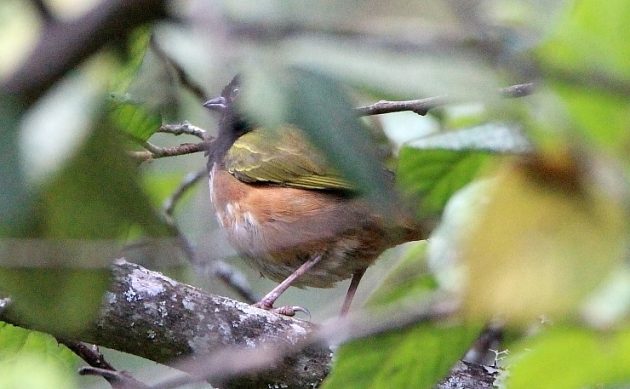
We have three kinds of Nightingale-Thrushes down here, and the Russet Nightingale Thrush is best identified by the pale section of its lower mandible. So this bad photo turned out not to be that bad, after all.
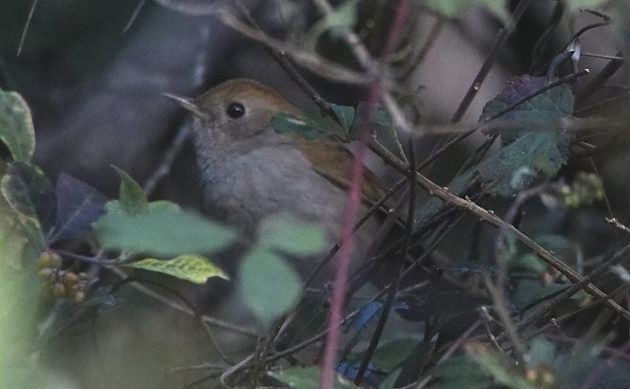
The next three photos aren’t bad; they’re just garden-variety bird pics. But they helped me to pick up a very nice catch for the day.
The Greater Pewee is guaranteed to turn up in our pine/oak forests here. But previous experience with Ejido Triquillo taught me that another species might turn up during the spring. The Olive-sided Flycatcher breeds in Canada and the western United States, and winters mostly in northern South America. Finding one on their occasional transit through Mexico will win you the respect and admiration of your Mexican birding friends. They may even fear you.
This one was a typical Greater Pewee.
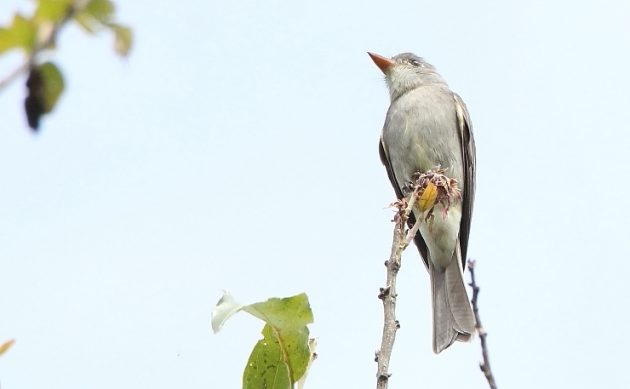
If it hadn’t been for my garden-variety photos, I wouldn’t have noticed this bird’s shorter tail, narrower and darker bill, and more patterned underparts. Proof enough of an Olive-sided Flycatcher.
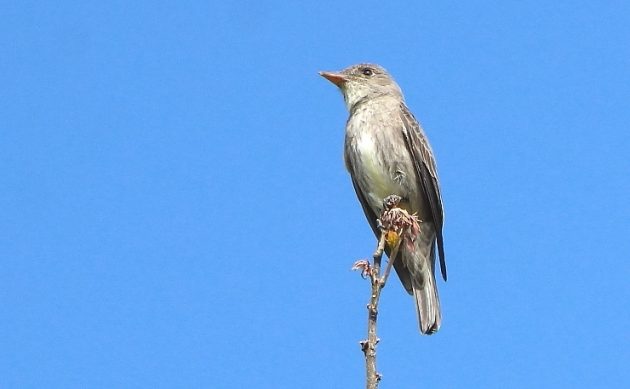
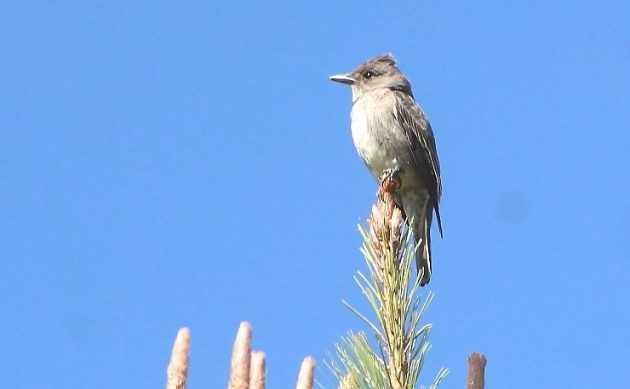
I took a perfectly decent photo of a Red-tailed Hawk. This being our most common hawk, I was not impressed.
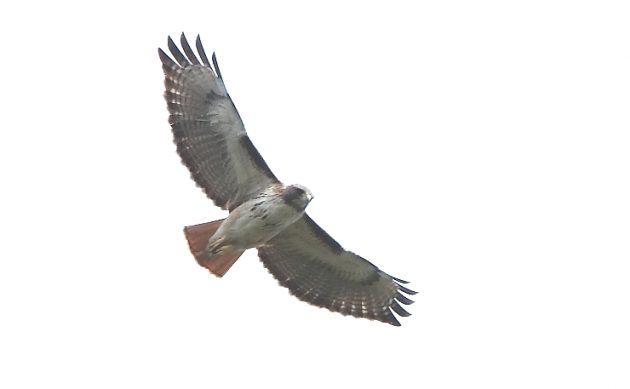
In contrast, this sub-standard shot of a Short-tailed Hawk delighted me. Like the Olive-sided Flycatcher, I saw my first Short-tailed Hawk for last year at Ejido Triquillo; and I only saw three in all of 2021. I don’t need a good image, as long as I have photographic proof of the sighting.
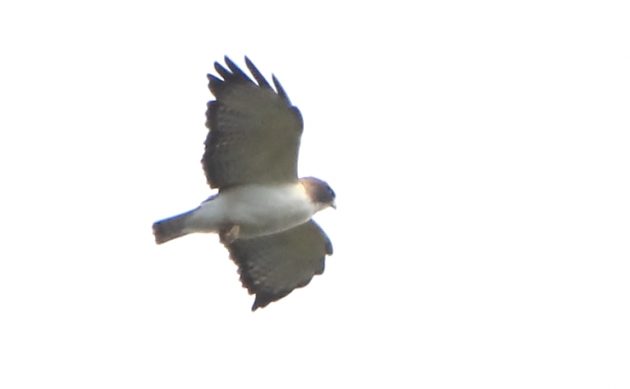
The image at the top is also of a Short-tailed Hawk seen on this outing, perhaps the same one. Believe it or not, both images were greatly improved in post-processing. They were actually worse when I started.
Of course, I can’t bat a thousand on the bad photo rankings. A rare Colima Warbler flashed its apricot hindparts at me and then darted further into the brush before I could lift my camera, leaving me with no photo at all. And a Hairy Woodpecker and Chestnut-sided Shrike-Vireo, also FOYs, insisted on giving me good photos. What could I do?
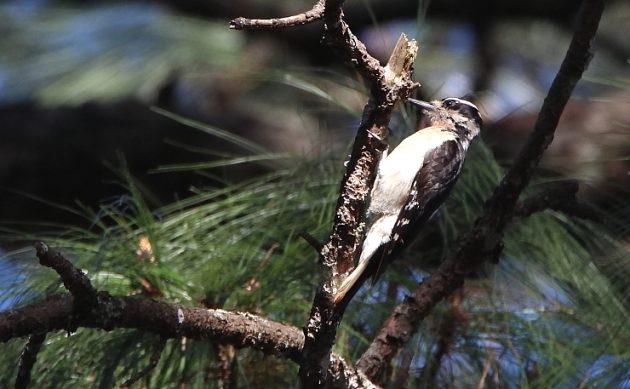
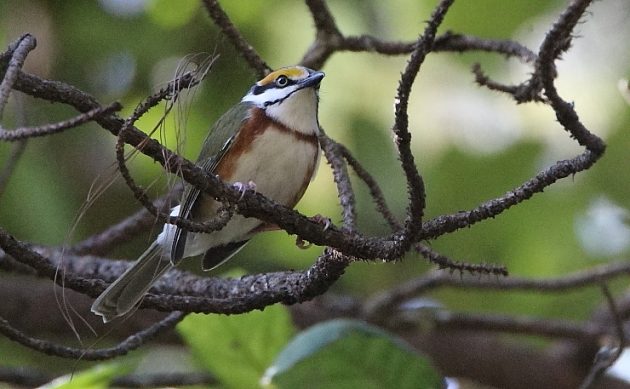
Please tell me when I have posted one too many photos of Chestnut-sided Shrike-Vireos. I have no self control.
There are many reasons to take bird photos. Having beautiful shots you can sell, if that is your preference, is certainly the most glamorous of them. But bad photos that help you identify what you see also serve a good purpose.
Of course, I also managed to take a bunch of incomplete or unfocused bird photos and turn them into a blog. Pretty slick, if I say so myself.











Nice post, perfect title, and photos to match 🙂
I went to great lengths to come up with such bad photos, Kai!